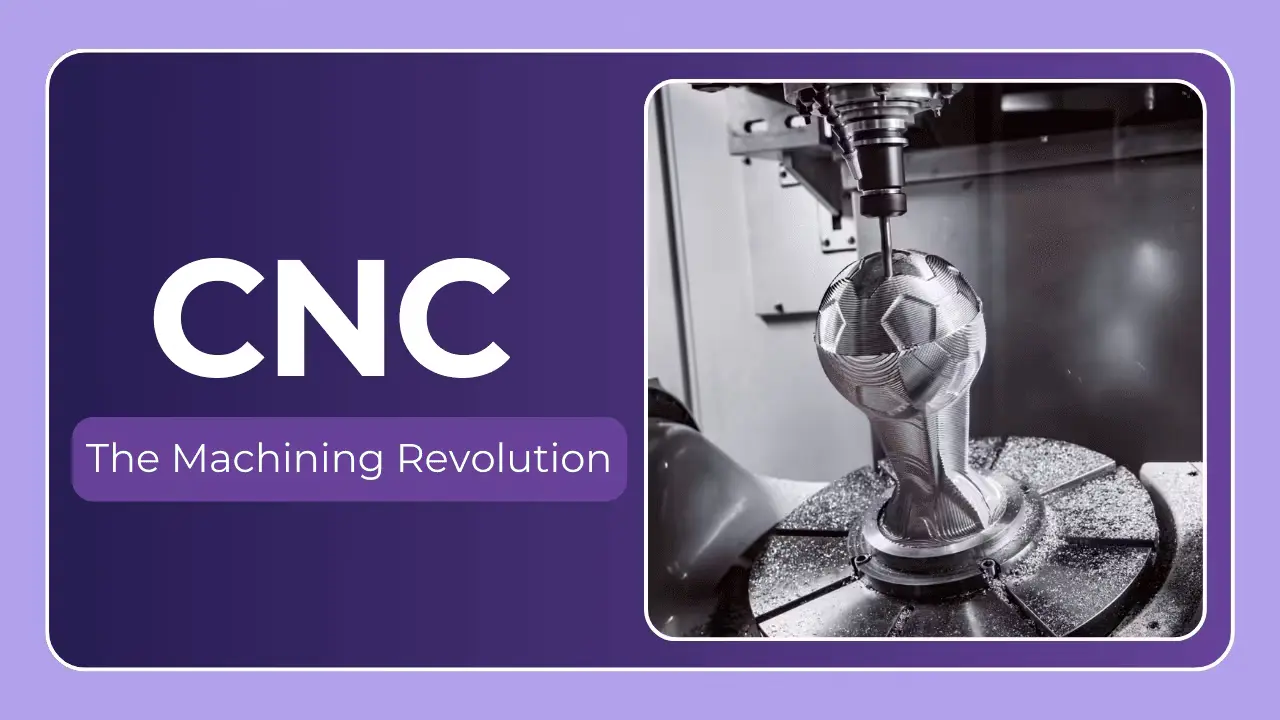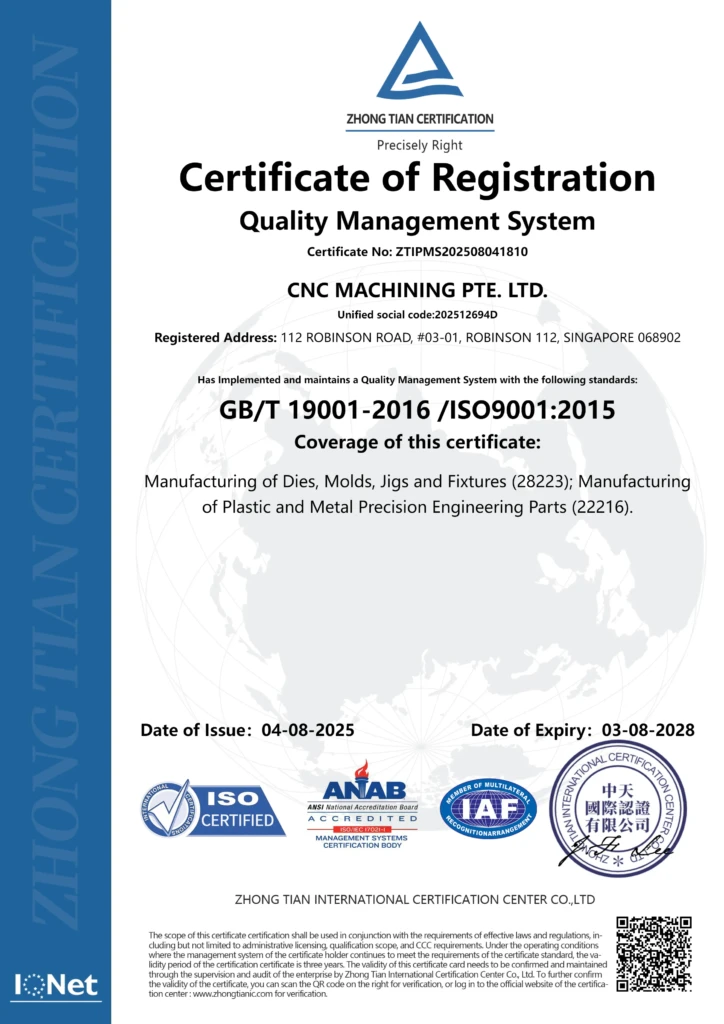The Critical Role of Precision in Medical CNC Machining
The medical device industry operates under a scrutiny unlike almost any other. Lives depend on the flawless functionality of every component, from intricate surgical instruments to life-sustaining implants. This demands a level of precision that goes far beyond what traditional manufacturing methods can consistently deliver. Enter CNC (Computer Numerical Control) machining, and specifically, advanced five-axis CNC machining, which has become the cornerstone of modern medical device manufacturing. At CNC MACHINING PTE. LTD, based in Singapore, we specialize in providing this critical precision, leveraging cutting-edge technology to solve complex metal parts manufacturing challenges.
Why Precision Matters: The Stakes are High
Before diving into the specifics of CNC machining, it’s crucial to understand why precision is paramount in the medical field. Consider these factors:
- Biocompatibility: Implants and devices that come into contact with the human body must be made from biocompatible materials, machined to exacting tolerances to avoid adverse reactions. Surface finish is critical – roughness can encourage bacterial growth or cause inflammation.
- Functional Integrity: Surgical instruments require incredibly sharp edges, precise alignment, and robust construction. Even minor deviations can compromise their performance during delicate procedures.
- Regulatory Compliance: The medical device industry is heavily regulated (think FDA in the US, and similar bodies globally). Manufacturers must demonstrate rigorous quality control and adherence to strict standards, including dimensional accuracy and repeatability. Documentation and traceability are key.
- Patient Safety: Ultimately, the goal is patient safety. A malfunctioning device due to manufacturing defects can have devastating consequences.
Traditional vs. CNC Machining: A Clear Distinction
Historically, medical components were often manufactured using manual machining processes. While skilled machinists can achieve good results, these methods are inherently limited by human error, tool wear, and the complexity of geometries they can produce.
CNC machining, on the other hand, utilizes pre-programmed computer instructions to control machining tools. This offers several key advantages:
- Superior Accuracy: CNC machines can consistently achieve tolerances of +/- 0.001 inches (25 micrometers) or even tighter, depending on the machine and material.
- Repeatability: Once a program is perfected, the machine can produce identical parts, batch after batch, with minimal variation.
- Complexity: CNC machining can create intricate shapes and features that would be impossible or prohibitively expensive to produce manually.
- Automation: Reduced manual intervention leads to faster production times and lower labor costs.
- Material Versatility: CNC machining can handle a wide range of materials commonly used in medical devices, including stainless steel, titanium, aluminum, plastics (PEEK, PTFE, etc.), and even specialized alloys.
The Power of Five-Axis CNC Machining
While three-axis CNC machining is common, five-axis machining represents a significant leap forward, particularly for medical applications. Here’s why:
- Increased Complexity: Five-axis machines can move a cutting tool across five different axes simultaneously, allowing for the creation of highly complex geometries with undercuts, angled holes, and contoured surfaces. This is essential for many medical implants and instruments.
- Reduced Setup Time: Complex parts often require multiple setups on a three-axis machine. Five-axis machining can often complete the entire part in a single setup, reducing setup time and potential for error.
- Improved Surface Finish: The ability to orient the cutting tool optimally relative to the workpiece results in a superior surface finish, minimizing the need for post-processing.
- Shorter Cutting Tools: Five-axis machining allows for the use of shorter, more rigid cutting tools, which reduces vibration and improves accuracy.
Materials Commonly Machined for Medical Devices
The choice of material is critical in medical device manufacturing. Here’s a breakdown of some common materials and their applications, along with typical CNC machining considerations:
| Material | Common Applications | CNC Machining Considerations | Typical Tolerances Achievable |
|---|---|---|---|
| Stainless Steel (316L, 17-4 PH) | Surgical instruments, implants, fasteners | Good machinability, requires appropriate cutting tools and coolants to prevent work hardening. | +/- 0.0005" (12.7 µm) |
| Titanium (Ti-6Al-4V) | Implants, bone screws, surgical tools | Difficult to machine due to its high strength and reactivity. Requires specialized cutting tools and techniques. | +/- 0.0003" (7.62 µm) |
| Aluminum (6061-T6, 7075-T6) | Instrument housings, handles, prototypes | Easy to machine, but can be prone to chipping. Requires careful selection of cutting parameters. | +/- 0.001" (25.4 µm) |
| PEEK (Polyether Ether Ketone) | Implants, spinal fusion cages, instrument components | Excellent biocompatibility and chemical resistance. Requires specialized cutting tools and techniques to prevent melting or deformation. | +/- 0.002" (50.8 µm) |
| PTFE (Polytetrafluoroethylene – Teflon) | Seals, bearings, coatings | Very soft and prone to deformation. Requires slow cutting speeds and sharp cutting tools. | +/- 0.003" (76.2 µm) |
Post-Processing and Finishing Services: Completing the Picture
CNC machining is often just the first step. Medical devices frequently require additional post-processing and finishing services to meet stringent requirements. At CNC MACHINING PTE. LTD, we offer a comprehensive suite of these services, including:
- Deburring: Removing sharp edges and burrs to ensure patient safety and prevent contamination.
- Polishing: Achieving a smooth, aesthetically pleasing surface finish.
- Passivation: Enhancing corrosion resistance, particularly for stainless steel components.
- Anodizing: Creating a protective oxide layer on aluminum parts.
- Surface Coating: Applying specialized coatings for biocompatibility, wear resistance, or other functional properties.
- Micro-blasting: Creating a textured surface for improved osseointegration (bone growth) on implants.
- Cleanroom Packaging: Ensuring parts are packaged in a controlled environment to maintain sterility.
Quality Control and Traceability: Non-Negotiable
In the medical device industry, quality control isn’t just important – it’s legally mandated. We employ a rigorous quality control process that includes:
- First Article Inspection (FAI): A comprehensive inspection of the first part produced to verify that it meets all specifications.
- In-Process Inspection: Regular inspections throughout the machining process to identify and correct any deviations.
- Coordinate Measuring Machine (CMM): Using a CMM to precisely measure dimensions and ensure accuracy.
- Material Certification: Verifying the composition and properties of the materials used.
- Full Traceability: Maintaining detailed records of every step of the manufacturing process, from raw material sourcing to final inspection.
Conclusion: Partnering for Precision and Innovation
The demands of the medical device industry are constantly evolving. Manufacturers need a partner who can not only deliver exceptional precision but also adapt to new challenges and embrace innovative technologies. CNC MACHINING PTE. LTD, with our advanced five-axis CNC machining capabilities, comprehensive post-processing services, and unwavering commitment to quality, is uniquely positioned to meet those demands.
We understand the critical importance of accuracy, repeatability, and traceability in medical device manufacturing. We are dedicated to providing our clients with the highest quality parts, delivered on time and at a competitive price.
Ready to discuss your custom precision machining needs? Customize your precision parts now at the best price! Contact CNC MACHINING PTE. LTD today to learn how we can help you bring your medical device innovations to life.




